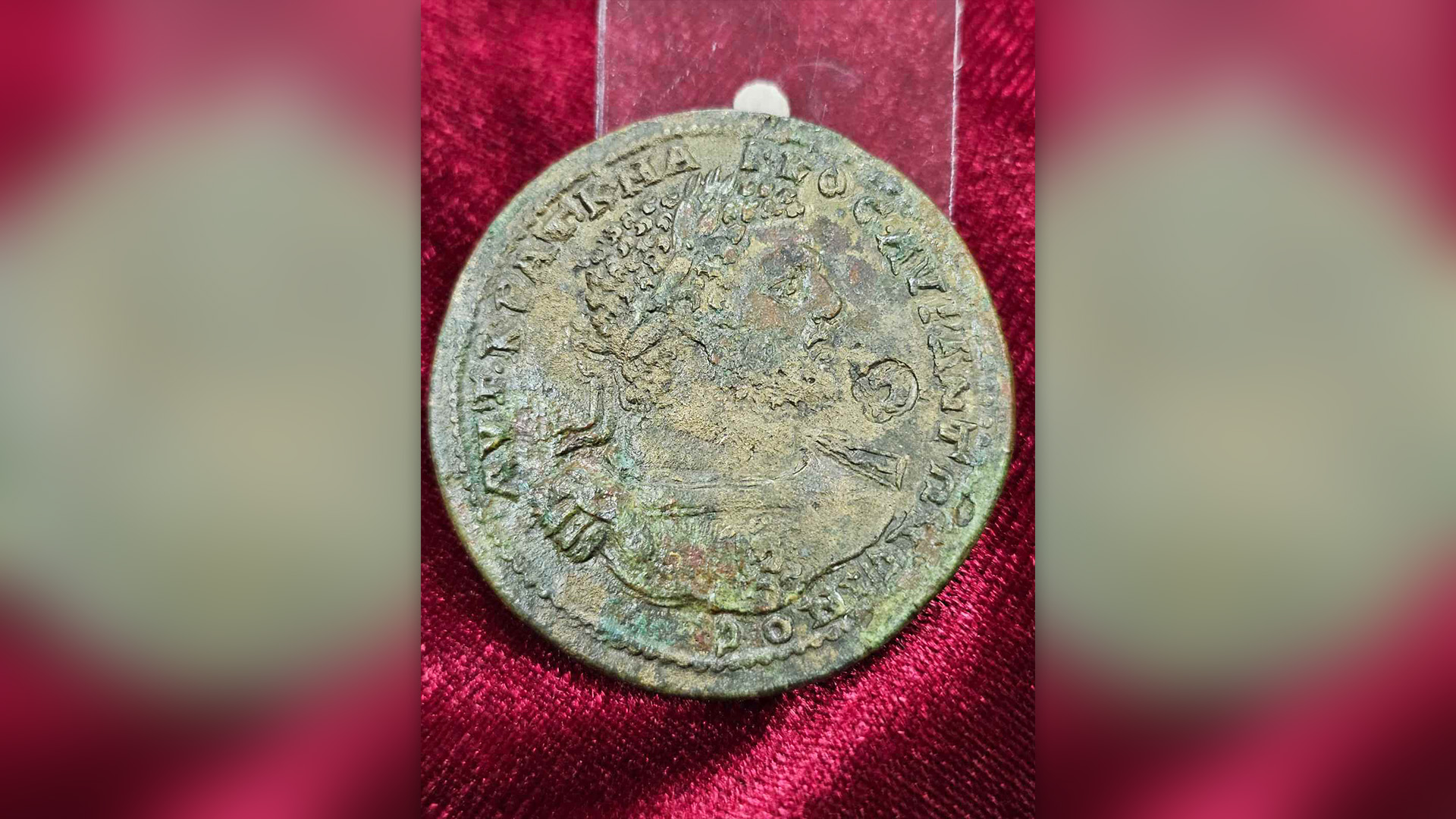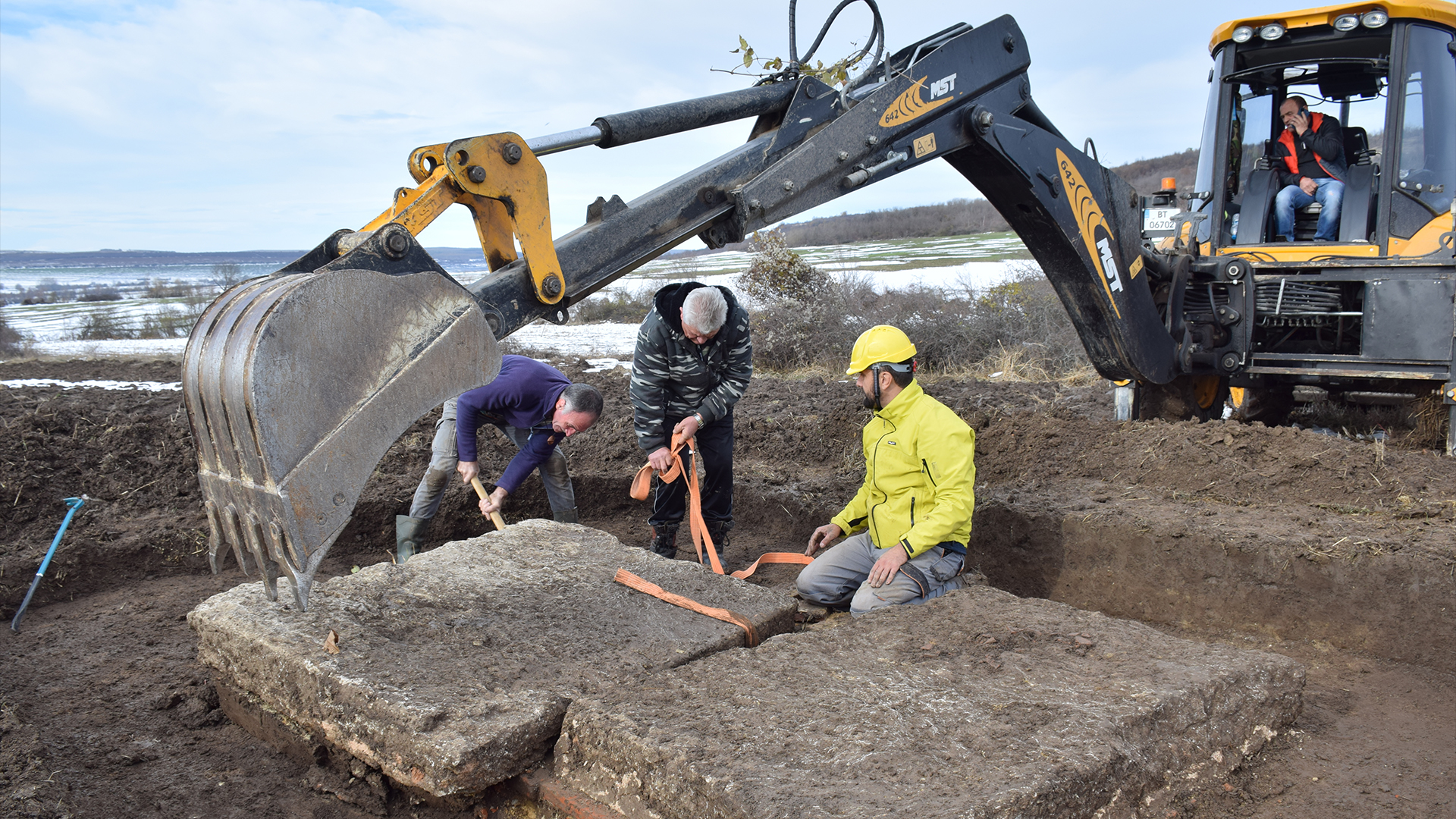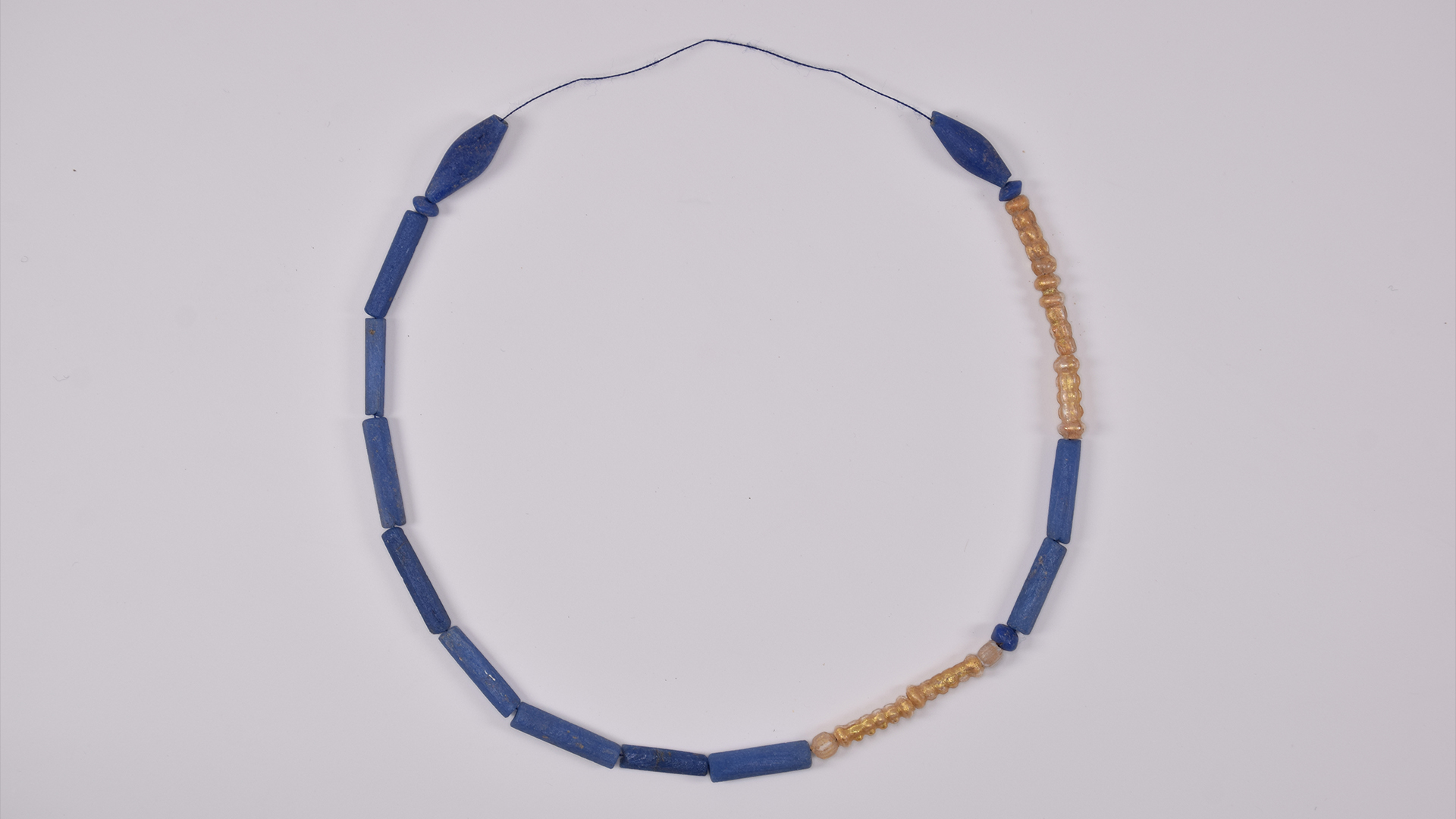1,800-year-old Roman tombs in Bulgaria included medallion featuring an emperor and glass bottles for collecting mourners' tears
A farmer in Bulgaria accidentally discovered two graves of a wealthy Roman-era family, but they appear to tell "a sad family story."

Two large graves discovered in northern Bulgaria likely tell "a sad family story" about wealthy Roman landowners whose child predeceased them in the third century A.D., archaeologists say.
In December 2023, a farmer unexpectedly found the graves while plowing his field in the village of Nova Varbovka. Because this region was a Roman province called Moesia in antiquity, archaeologists from the Veliko Tarnovo Regional Museum of History came to excavate the graves.
Both graves were built of brick, with plaster lining the walls and a large slab of limestone covering them. The larger of the two was roughly 10 feet (3 meters) long and contained the remains of two adults — a man and a woman who were both around 45 to 60 years old at death — buried with jewelry, coins, and ceramic and glass vessels.
The smaller grave, made somewhat earlier, contained the skeleton of a 2- to 3-year-old child and a rare bronze medallion depicting the Roman emperor Caracalla's (ruled A.D. 198 to 217) visit in A.D. 214 to Pergamon (also spelled Pergamum) in Asia Minor (modern-day Turkey), where he sought out the temple to Asclepius, the god of healing. Collectively, the two graves may represent a family's final resting place.
Some of the limestone from the graves appears to have come from a quarry near Nicopolis ad Istrum, a Roman and early Byzantine town founded by the emperor Trajan in the early second century. "This peculiarity and other indications make me think that the deceased are somehow related to the territory of Nicopolis ad Istrum," Kalin Chakarov, an archaeologist at the Veliko Tarnovo Regional History Museum, told Live Science in an email.
Related: Tomb of Rome's mythical founder Romulus unearthed





Chakarov, who excavated the burials along with colleagues Nedko Elenski and Mihaela Tomanova, noted that the Caracalla medallion could point to an Asia Minor origin for the occupants of the graves, which would be consistent with the fact that Nicopolis ad Istrum was built mainly by settlers from Asia Minor. "Of course, we are searching for an opportunity to make DNA and other analyses which our museum can't afford, to see if this hypothesis is correct," Chakarov said.
Get the world’s most fascinating discoveries delivered straight to your inbox.
"The discovery of such tombs in the territory of Bulgaria is not a surprise, since the climate and soils are very good for growing agricultural crops," Ivan Tsarov, director of the Veliko Tarnovo Regional History Museum, told Live Science in an email. "Probably the tombs are of rich landowners," Tsarov said, since "it was the practice in Moesia Inferior for landowners to live in the warmer months of the year and be buried on their estates."


The artifacts discovered during the excavation are still being processed in the museum laboratory, where they are undergoing conservation and restoration, according to Tsarov. These include objects used during the deceased's lifetime, as well as those that would accompany them into the afterlife. In addition to jewelry made of glass beads and gold, there were six coins that dated to between A.D. 200 and 225, as well as a lamp, a leather shoe and several glass bottles, three of which were "lacrimaria," small flasks for collecting the tears of mourners.
"I think that it is a sad family story from the first half of the 3rd century," Chakarov said. "A dead infant, buried by their parents, who had their last resting place on the same spot where they buried their child."
Chakarov plans to conduct work in the area to try to find where these people lived, which he thinks was likely close to this newly discovered cemetery.

Kristina Killgrove is a staff writer at Live Science with a focus on archaeology and paleoanthropology news. Her articles have also appeared in venues such as Forbes, Smithsonian, and Mental Floss. Kristina holds a Ph.D. in biological anthropology and an M.A. in classical archaeology from the University of North Carolina, as well as a B.A. in Latin from the University of Virginia, and she was formerly a university professor and researcher. She has received awards from the Society for American Archaeology and the American Anthropological Association for her science writing.


